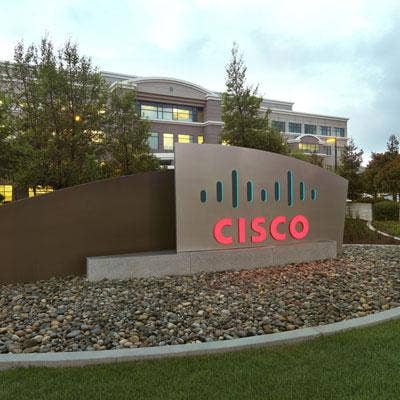6 Keys To Cisco's New Performance Metrics For The 'Network Intuitive' Era

Better Alignment
Cisco Systems is consolidating the product categories it uses when reporting financial results, halving the number from 10 to five in an attempt to "better align our product categories with our evolving business model," the company said.
The new arrangement is part and parcel of Cisco's evolving strategy move away from the expensive, proprietary hardware that made it an IT industry giant and toward the cloud-focused software and consumption-based economics currently driving the market and its "Network Intuitive" strategy. It also helps simplify what one observer called a "mishmash" of categories that made it difficult to follow progress and gauge success or failure.
Most customers now operate in complex, multi-cloud environments, CEO Chuck Robbins (pictured) said Wednesday during a call with Wall Street investors to discuss the company's first-quarter earnings, and Cisco has reimagined its portfolio to emphasize new consumption models and focus on software and subscription revenue as the keys to future growth.
The new categories were put into practice for the first time Wednesday when Cisco reported first-quarter earnings. Under the new arrangement, Cisco left its security and services sections untouched but collapsed eight other former sections into three new, broader categories. As part of the change, Cisco laid out three years of reclassified revenue figures.
Click through to see several key facts about the new categories.

Made To Measure
As part of the move to the new categories, Cisco recalculated three years of revenue under the new system to make it easier to do historical comparisons. The comparisons show both the challenges and opportunities Cisco faces as it navigates a fiscal year that could prove to be a turning point. Over the last three fiscal years, for example, products in the new Infrastructure Platforms category have gone from sales growth of 6 percent to a decline of 4 percent last year while security has posted consistent double-digit or near-double-digit gains over that time.

Infrastructure Platforms
The new Infrastructure Platforms category represents Cisco's core networking business and takes the place of four former categories: Switching, Routing, Wireless and Data Center. Cisco reported slightly less than $7 billion in revenue for the Infrastructure Platforms category for the first quarter. That is a 4 percent decline from the same period a year ago, the company said.

Applications
This category represents a significant part of Cisco's future in an increasingly software-centric, consumption-based market. These products run on top of the network, including Cisco TelePresence, unified communications, conferencing, IoT and analytics, including product revenue from the recently acquired AppDynamics, the company said. Applications sales were $1.2 billion in the first quarter, a 6 percent increase year-over-year.

Security
This is a key area for Cisco, and a category the company has left unchanged in the recent rejiggering. Robbins Wednesday said the security strategy – to provide security across environments that include multiple Software-as-a-Service providers, cloud providers, data centers and edge connectivity – is resonating with customers. Security sales in the quarter were $585 million, up 8 percent from the same period a year ago.

Other Products
It may sound like a dumping ground for benchwarmer products, but this category is actually critical to Cisco's strategy because it includes Cisco's cloud and systems management products, as well as emerging technology offerings and service provider video (which the company divested in late 2015). Still, the first quarter was not exactly kind to that category. Sales were $296 million, a 16 percent decline from the same period the prior year.

Services
The services category is unchanged from its previous incarnation. Services sales hit $3.1 million in the first quarter, a 1 percent increase over the same period a year ago, Cisco said.